Easy Kongguksu (Cold Soy Milk Noodle Soup)
Make easy kongguksu at home in just 10 minutes! This cold Korean soy milk noodle soup is creamy, refreshing, and naturally vegan—perfect for summer. A quick, plant-based recipe using tofu, soy milk, and somyeon noodles.

When summer hits in Korea, cold noodles start calling—and kongguksu, this creamy, chilled soy milk noodle soup, is always at the top of my list. It’s nutty, refreshing, and naturally plant-based—a simple dish that somehow feels comforting and light all at once.
I didn’t love kongguksu right away. Cold soy milk soup? I was skeptical. But one perfect bowl won me over.
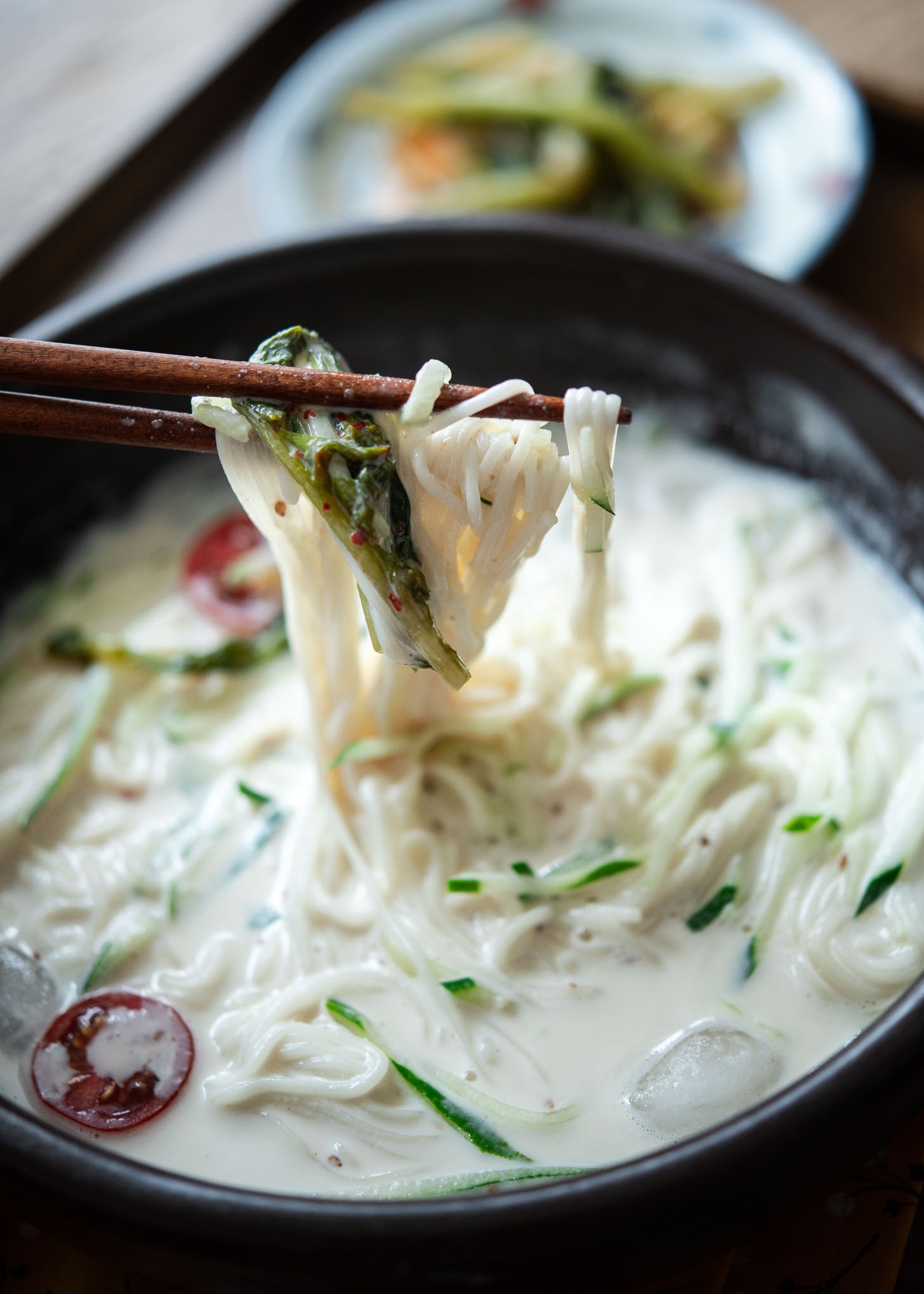

Get new recipes via email:
Now, it’s my go-to when I want something quick and cooling. And with this shortcut version, there’s no need to soak or peel soybeans—just blend tofu with plain soy milk, a few roasted peanuts, and sesame seeds for a creamy, nutty broth.
Serve it over somyeon noodles with crisp cucumber, tomatoes, and a few ice cubes, and you’ve got a Korean summer noodle dish ready in under 10 minutes. It’s a time-saving recipe at its best.
If you’re into cold noodle dishes like this, check out my spicy bibim guksu recipe—it uses the same somyeon noodles but with a bold, tangy gochujang sauce. Or cool off with a bowl of classic naengmyeon, made with chewy buckwheat noodles in icy broth—refreshing and full of flavor.
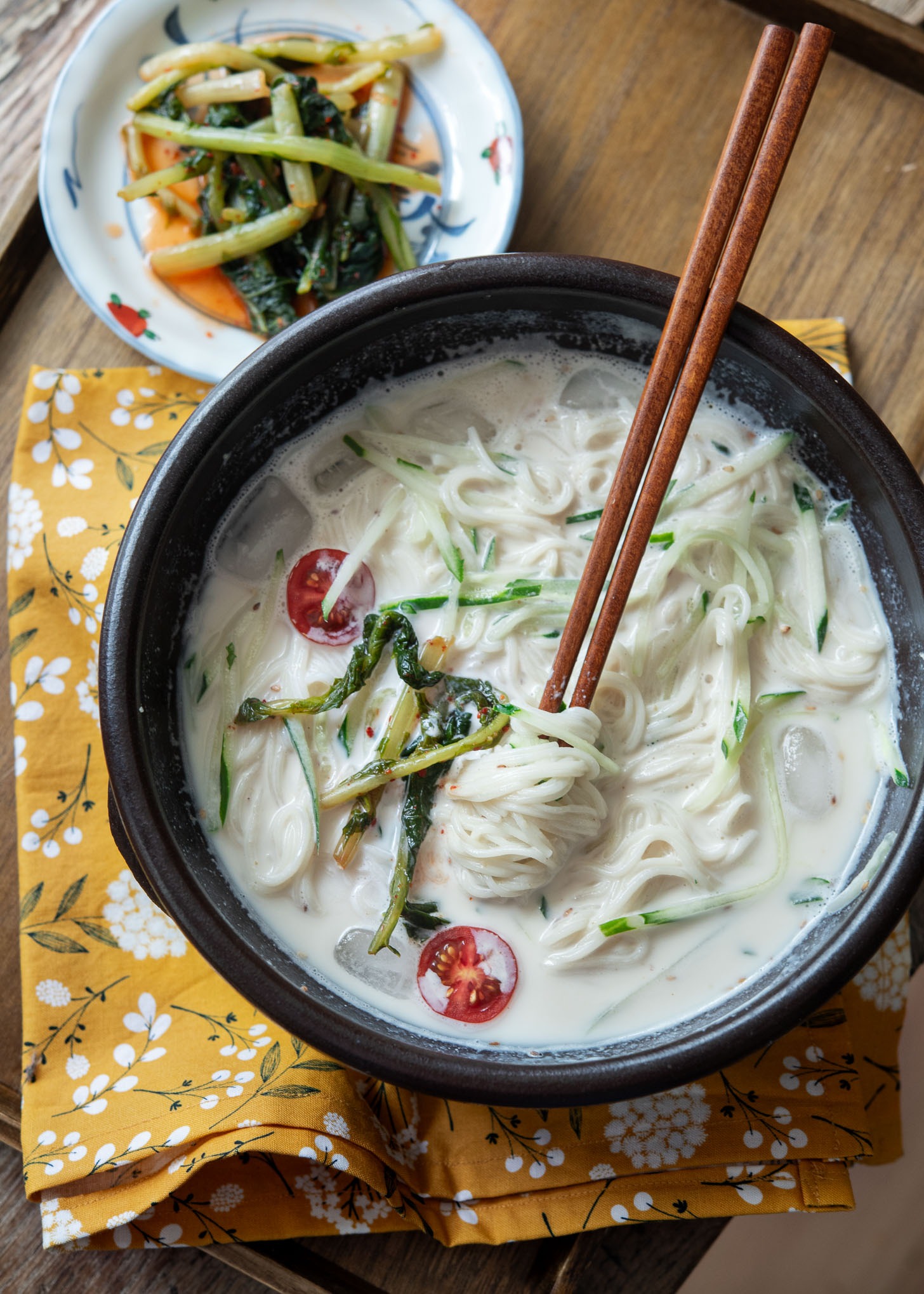
Notes on Key Ingredients
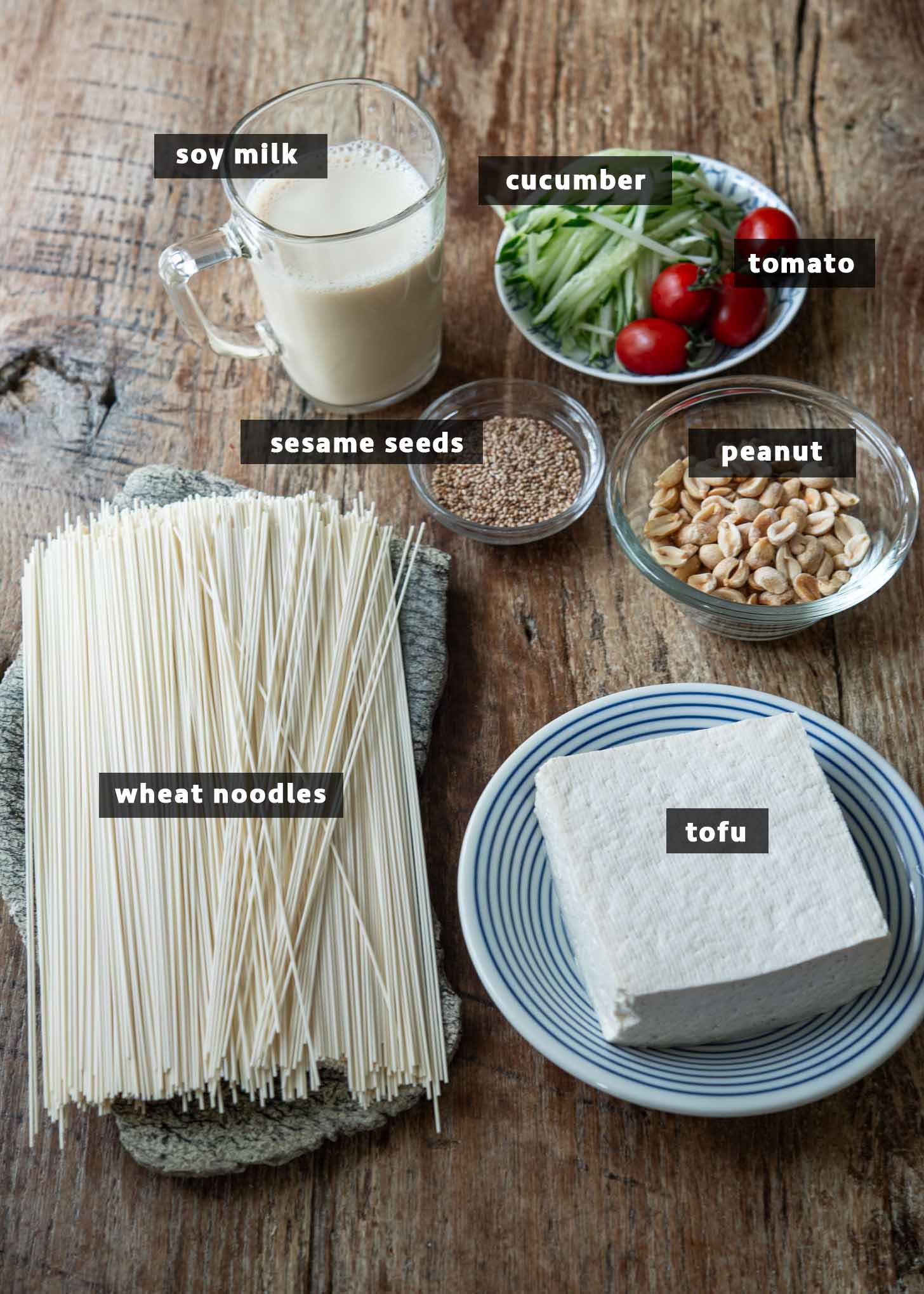
To make this shortcut kongguksu both fast and flavorful, I use a blend of tofu and plain, unsweetened soy milk as the base. It skips the time-consuming process of soaking and peeling soybeans but still gives you that creamy, nutty broth. I enhance the flavor further with a handful of dry roasted peanuts and toasted sesame seeds—these little additions bring out the natural nuttiness that soy milk alone sometimes lacks.
For noodles, go with somyeon (thin wheat noodles), which have the perfect bite and smooth texture for cold soups. Once cooked and chilled, they pair beautifully with the soy milk broth.
As for toppings, I like to keep it simple with shredded cucumber, cherry tomatoes, and sometimes a halved hard-boiled egg. Ice cubes are optional, but they give the bowl an extra refreshing chill that’s perfect on hot summer days.
How to Make Kongguksu (Cold Soy Milk Noodle Soup)
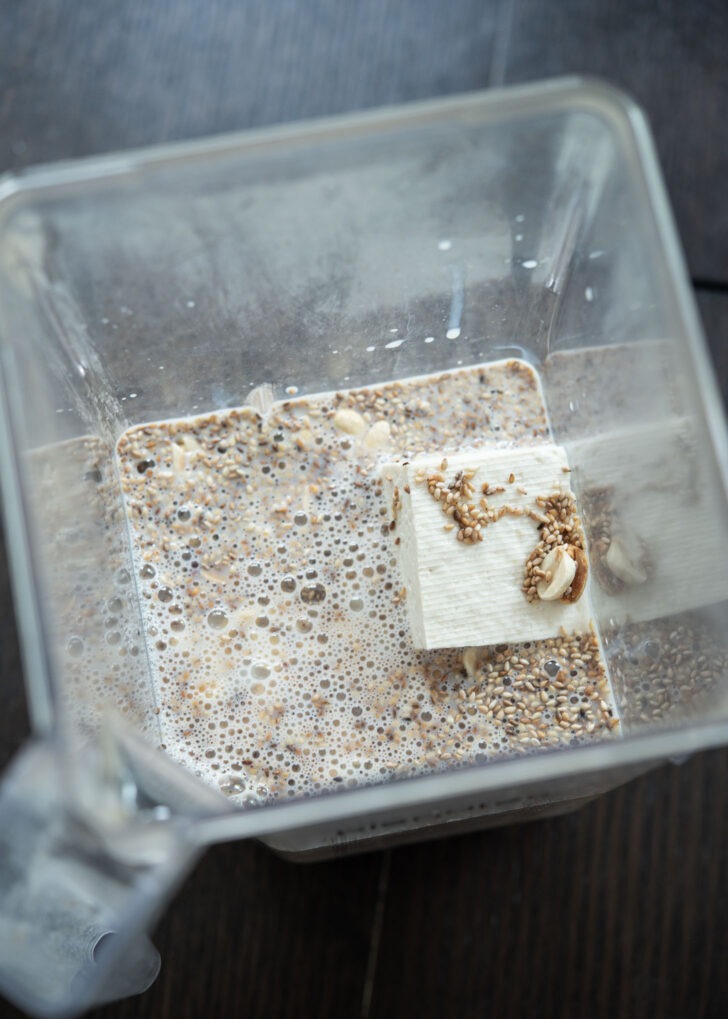
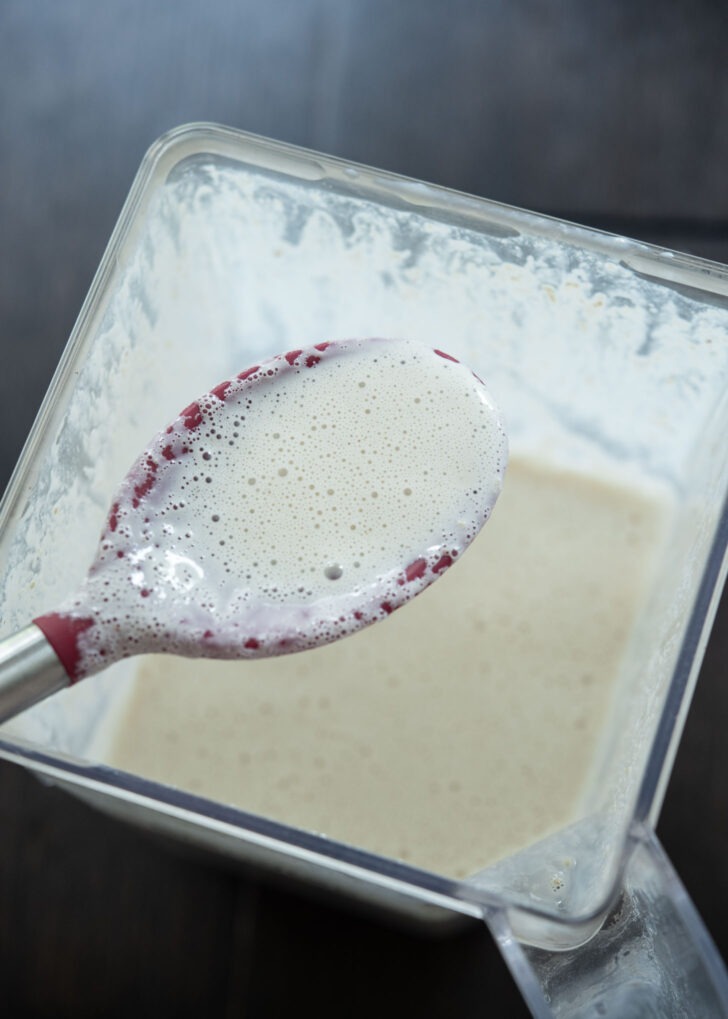
1. Create soy milk broth: Combine tofu, soy milk, peanuts, sesame seeds, and water in a blender. Process until smooth, adding more water for a thinner consistency. Season with salt and optional sugar.

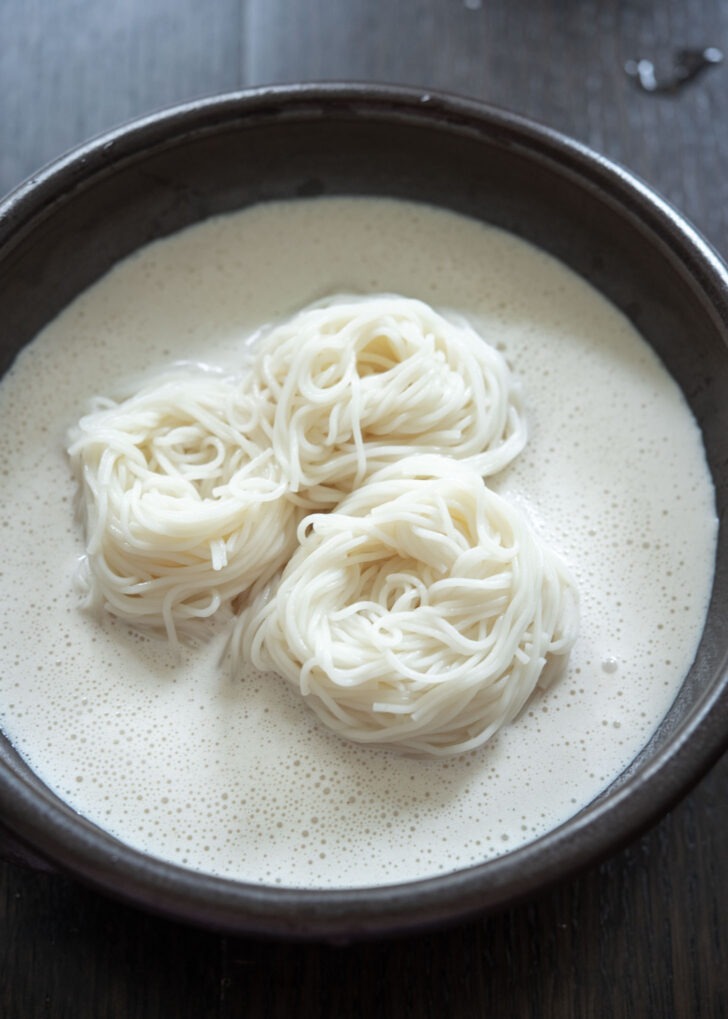
2. Prepare the Noodles: Boil somyeon (thin wheat noodles) according to the package. For a chewier texture, splash in a bit of cold water once it starts boiling. Rinse well under cold water to stop the cooking.
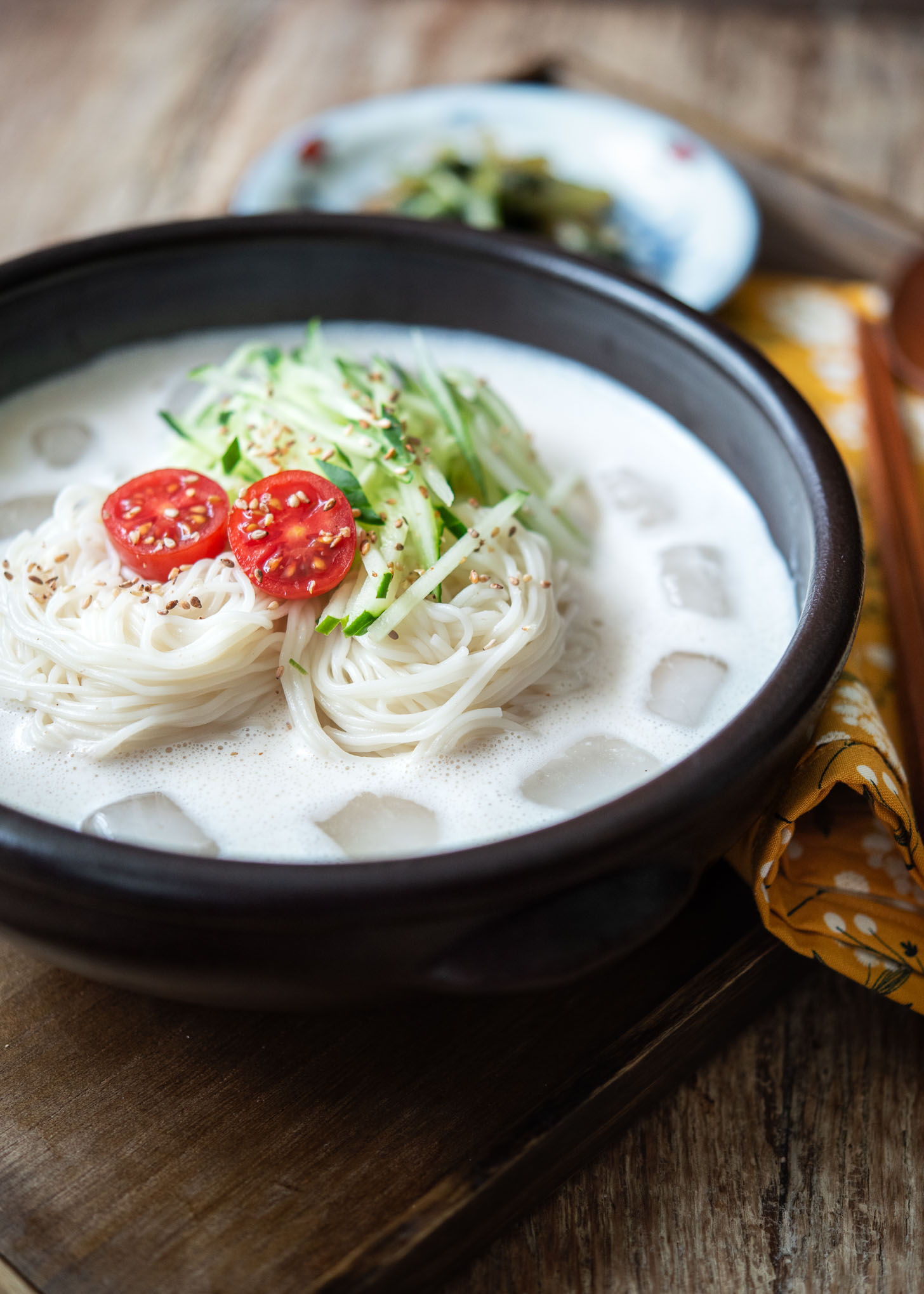
3. Garnish and serve: Place the noodles in bowls and pour the cold soy milk broth over them. Top with cucumber, tomato, and a hard-boiled egg. Ice cubes are optional, but they make it extra refreshing.
My Favorite Side for Kongguksu
Did you know that kongguksu is often paired with yeolmu kimchi—a light, slightly tangy kimchi made from young radish greens? It’s especially popular in the summer and makes a perfect side to this cold soy milk noodle soup. Cool, creamy, and a little crunchy—it’s a combo I always look forward to.
More Easy Noodle Recipes to Try
- Janchi Guksu (Korean Noodle Soup)
- 15-Minute Sesame Soba Noodle Bowl
- 20-Minute Beef Gochujang Noodles
- Korean-Style Ground Beef Noodles
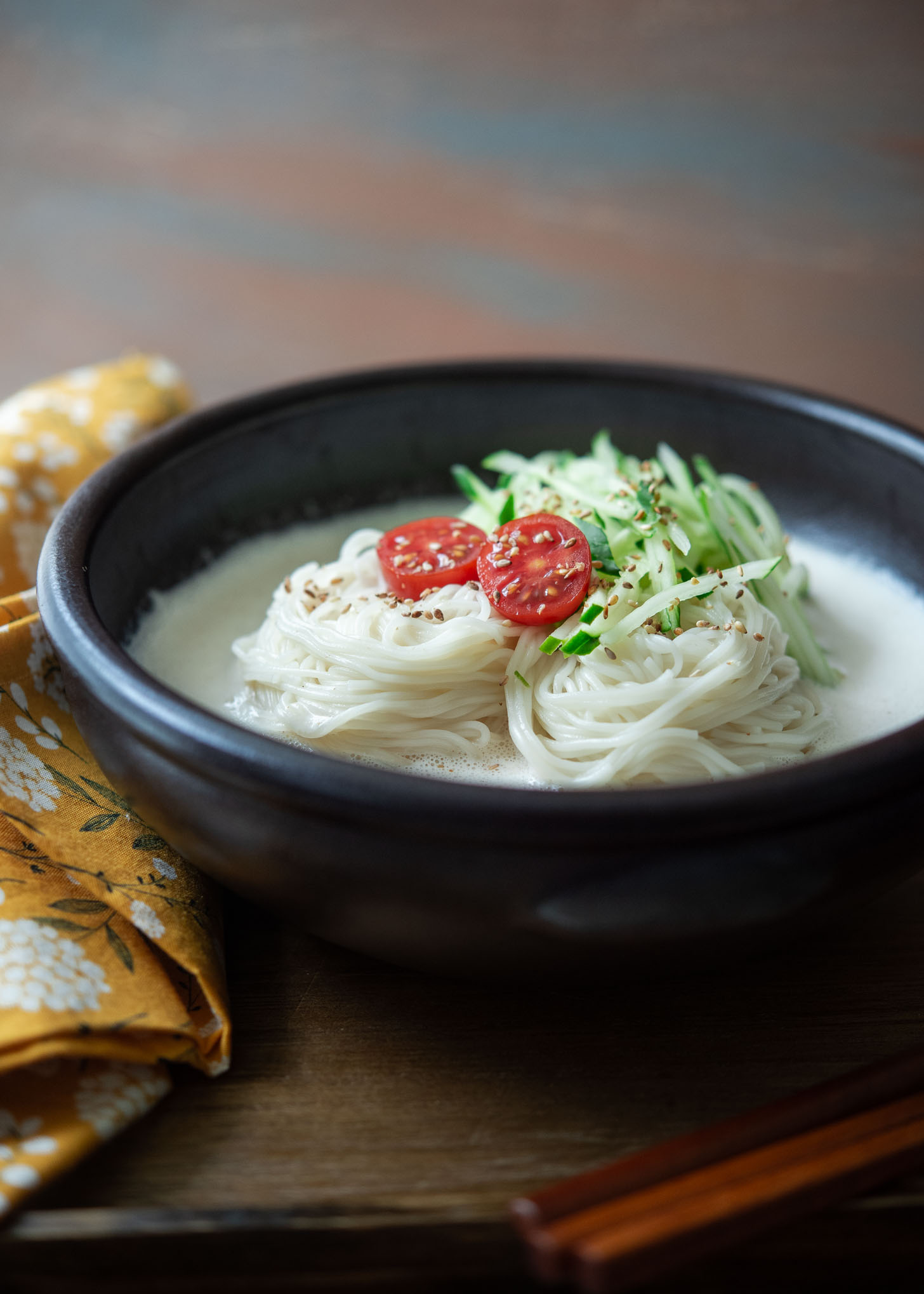
Love this recipe? Rate it and share your experience in the comments below! On Instagram? Tag me to showcase your creation. For more delicious recipes, subscribe to our newsletter!
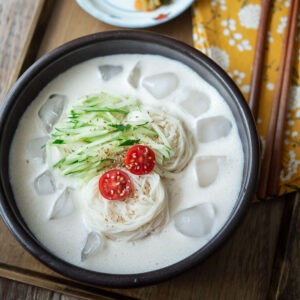
Easy Kongguksu (Korean Cold Soy Milk Noodles)
Recipe Video
Ingredients
- 10 oz (300 g) tofu, either soft or firm
- 1 1/2 cup (360 ml) soy milk, plain and unsweetened
- 1 cup (240 ml) cold water, or more
- 1/2 cup (65 g) dry roasted peanut, shelled, unsalted
- 2 tbsp toasted sesame seeds
- 1 tsp salt, or more to season
- 1 tsp sugar, optional
- 2 servings thin wheat noodles (somyeon)
To garnish
- ice cubes
- cucumber, shredded
- cherry tomato
- hard-boiled egg
Equipment
Instructions
- In a blender, combine the tofu, soy milk, water, peanuts, and sesame seeds. Blend these ingredients until they form a smooth mixture. Add more water if you prefer a thinner consistency. For seasoning, add salt and, if you'd like, some sugar.
- Cook the wheat noodles as per the package instructions. Here's a tip for chewier noodles: Pour cold water into the pot when it begins to boil. After cooking, drain the noodles and rinse them under cold running water.
- In individual serving bowls, add the noodles and then pour the tofu soy milk broth over them. To make it extra refreshing, add some ice cubes. Garnish with cucumber slices and tomatoes. Hard-boiled eggs also make a great addition.

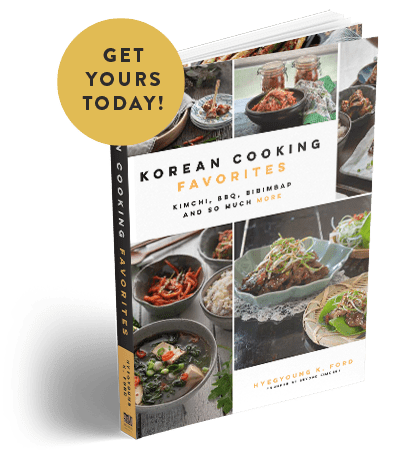
I…how… why… why does this contain peanuts?:( kongguksu does not contain peanuts ever. Our food doesn’t contain that in general, pretty much ever, either. Who taught you to put peanuts in this soup…? Why are you teaching white people to put peanuts in korean food?
First of all, thank you for your comment—I appreciate your feedback. I’d like to clarify a few points. This recipe is not intended to be a fully authentic kongguksu recipe; it’s a quick, 10-minute version designed for convenience, as mentioned in the title.
Regarding your comment about peanuts, it’s important to note that while some prefer to use only soybeans for kongguksu (like yourself), many Korean home cooks add a small amount of peanuts to enhance the nuttiness of the dish, as soybeans alone can sometimes taste bland. This is a personal and practical adaptation that reflects how cooking evolves over time, much like cuisines all over the world.
Additionally, it’s not accurate to say that peanuts are hardly used in Korean cuisine. Peanuts have been incorporated into dishes like anchovy stir-fry (myulchi bokkeum), traditional Korean snacks, and desserts like Korean peanut bars (ganjeong) for decades.
Finally, my blog is a space to share food with everyone, regardless of race, culture, or background. I don’t create recipes to target or teach a specific group; rather, this recipe reflects my personal interpretation. I hope it inspires people to explore and enjoy Korean flavors, even if it’s not entirely traditional.
I loved this! I substituted 1 Tbsp peanut butter for the peanuts but otherwise followed the recipe and serving instructions.
Could I use regular milk or does it need to be soy milk?
I recommend using soy milk for the soy flavor this dish requires.
How long can you leave it in the fridge after making it? I made too much😭
It should stay fresh in the fridge up to 3-4 days.
Hi, Holly! Thank you so much for this recipe! I’ve been craving this dish for quite some time, but don’t have the time or energy to process the soybeans. I’ve been wondering if I could use store-bought soy milk instead and you’ve answered my question! I’m excited to try this recipe and introduce my 6 year old daughter to kongguksu. I hope she likes it as much as I do. I miss my mom’s cooking and this will allow me to enjoy a dish that she no longer has time to make.